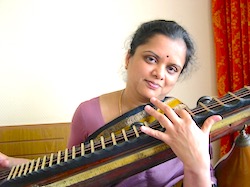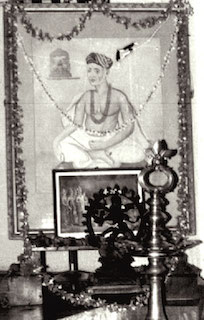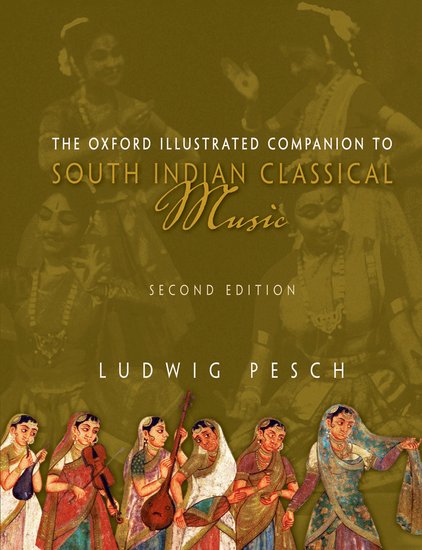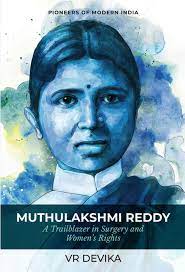Muthulakshmi Reddy – A Trailblazer in Surgery and Women’s Rights is the story of a pioneer path-creator for women. She was the first girl student in Maharaja’s School for Boys in Pudukkottai, the first Indian woman surgeon from Madras Medical College, the first Indian member of the Women’s Indian Association, the first woman member of legislature of Madras Presidency, the first woman deputy speaker and the first alderwoman.
In this book the author describes the indomitable spirit of a woman who campaigned to get rid of the practice of wet nurses, fought for girls’ education and widow remarriage, equal property rights for women, education reform, and rural healthcare for women. She took up the case of getting the practice of dedicating young girls as Devadasis abolished.
“Muthulakshmi Reddy was a reformer from the inside, as it were like Dr Ambedkar was. Which is different from being like a corrector from the outside.” – Gopalkrishna Gandhi
(Pioneers of Modern India series, www.niyogibooksindia.com, INR 299)
Excerpts (pp. 13-14, & 17-18 and Ch. “The Devadasi Question”, pp. 119-143)
Muthulakshmi was privileged as the daughter of this educated and liberal Brahmin man who gave her the much-desired access to formal learning. However, Muthulakshmi faced discrimination on account of being the daughter of Chandrammal, who belonged to the Melakkara community. The women of the community were trained in music and dance, and were permitted to perform in temple processions and rituals, and for the public on social occasions. Marriage in the conventional sense was barred for them according to religious rules, but they could be chosen by an upper caste [*] male patron of means as a companion outside his own legal marriage. The children born in such relationships were not formally acknowledged by the fathers. Most members of the Melakkara community carried the name of the village or town they hailed from as identity, like Tirugokarnam Kanakambujam or Tiruvalaputtur Kalyani. […]
Muthulakshmi endured unkind remarks from boys who would stand at road corners as she walked to the Nellumandi Baliah School with a writing slate in hand.
‘Here is a daughter of a Thevaradiyar (a corruption of the word ‘devdasi, used in the Melakkara community for women dedicated to God in a ritual marriage but were partners to the male members with no strings attached) going to school, they would shout. To avoid the boys, she chose to walk through smaller lanes and by-lanes.
‘Any art or culture worth preserving will certainly hold its own against all times and against all conditions. Our attempt should be to free it from its ugly associations and the incrustations of ages which now keeps it dim and repulsive to many so that the divine art may be learned by all … then only India’s art, the rich legacy of ages, will shine brighter and will command respect and admiration of the world.’ [Endnote 1.: Muthulakshmi Reddy, “Anti Nautch Movement”, Madras Mail, 17 December 1932]
Muthulakshmi was concerned that the word ‘Devadasi’ was considered as an abusive term in Tamil. She wanted to release women born to Devadasis from the curse, and give them a future free of such an association. If dance and music were so integral to the system that so oppressed a woman, they must be halted too, so that new art could emerge.
Some clarifications on caste-related issues by reputed scholars
Understanding “caste” in the context of Indian democracy: The “Poona Pact of 1932”
“Mahatma Gandhi and BR Ambedkar differed over how to address caste inequities through the electoral system. Their exchanges led to the Poona Pact of 1932, which shaped the reservation system in India’s electoral politics. […]
Two prominent figures who have significantly contributed to this discourse are Mahatma Gandhi, Father of the Nation, and Bhimrao Ramji Ambedkar, Father of the Constitution. The two stalwarts of Indian politics, while revered equally by the public, had contrasting views on the caste system. Their subsequent debates have shaped the course of Indian society and politics. While Gandhi denounced untouchability, he did not condemn the varna system, a social hierarchy based on occupation, for most of his life. He believed in reforming the caste system through the abolition of untouchability and by giving equal status to each occupation. On the other hand, BR Ambedkar, a Dalit himself, argued that the caste system disorganised and ‘demoralised Hindu society, reducing it to a collection of castes’. […]
And yet, despite their differences, they developed an understanding to work for the betterment of the marginalised.” – Rishabh Sharma in “How Ambedkar and Gandhi’s contrasting views paved way for caste reservation” (India Today, 6 October 2023)
URL: https://www.indiatoday.in/history-of-it/story/ambedkar-gandhi-caste-system-poona-pact-1932-reservation-2445208-2023-10-06
~ ~ ~
“That upper caste groups should declare themselves to be OBCs [Other Backward Castes] and want to avail of the reservation policy is a pandering to caste politics of course, as also are caste vote-banks. It is partially a reflection of the insecurity that the neo-liberal market economy has created among the middle-class. Opportunities are limited, jobs are scarce and so far ‘development’ remains a slogan. There’s a lot that is being done to keep caste going in spite of saying that we are trying to erode caste. We are, of course, dodging the real issue. It’s true that there has been a great deal of exploitation of Dalit groups and OBC’s in past history; making amends or even just claiming that we are a democracy based on social justice demands far more than just reservations. The solution lies in changing the quality of life of half the Indian population by giving them their right to food, water, education, health care, employment, and social justice. This, no government so far has been willing to do, because it means a radical change in governance and its priorities.” – Romila Thapar (Emeritus Professor of History, Jawaharlal Nehru University) interviewed by Nikhil Pandhi (Caravan Magazine, 7 October 2015)
URL: https://caravanmagazine.in/vantage/discipline-notion-particular-government-interview-romila-thapar
~ ~ ~
“Casteism is the investment in keeping the hierarchy as it is in order to maintain your own ranking, advantage, privilege, or to elevate yourself above others or keep others beneath you …. For this reason, many people—including those we might see as good and kind people—could be casteist, meaning invested in keeping the hierarchy as it is or content to do nothing to change it, but not racist in the classical sense, not active and openly hateful of this or that group.” – Book review by Dilip Mandal for Caste: The Origins of Our Discontents (The Print, 23 August 2020)
URL: https://theprint.in/opinion/oprah-winfrey-wilkerson-caste-100-us-ceos-indians-wont-talk-about-it/487143/
~ ~ ~
“The theoretical debate on caste among social scientists has receded into the background in recent years. [However] caste is in no sense disappearing: indeed, the present wave of neo-liberal policies in India, with privatisation of enterprises and education, has strengthened the importance of caste ties, as selection to posts and educational institutions is less based on merit through examinations, and increasingly on social contact as also on corruption. There is a tendency to assume that caste is as old as Indian civilization itself, but this assumption does not fit our historical knowledge. To be precise, however, we must distinguish between social stratification in general and caste as a specific form. […]
From the early modern period till today, then, caste has been an intrinsic feature of Indian society. It has been common to refer to this as the ‘caste system’. But it is debatable whether the term ‘system’ is appropriate here, unless we simply take for granted that any society is a ‘social system’. First, and this is quite clear when we look at the history of distinct castes, the ‘system’ and the place various groups occupy within it have been constantly changing. Second, no hierarchical order of castes has ever been universally accepted […] but what is certain is that there is no consensus on a single hierarchical order.” – Harald Tambs-Lyche (Professor Emeritus, Université de Picardie, Amiens) in “Caste: History and the Present” (Academia Letters, Article 1311, 2021), pp. 1-2
URL: https://www.academia.edu/49963457
~ ~ ~
“There is a need for intercultural education. We all need to work together to bridge these divides not only between religions and castes but also regions. It is not correct to think that one part is better than the other. Some of the limitations of India as a whole are due to our common heritage, say the one that has restricted women from having a flourishing life for themselves.” – Prof. V. Santhakumar (Azim Premji University) in “On the so called North-South Divide in India” (personal blog post in Economics in Action, 13 April 2024)
URL: https://vsanthakumar.wordpress.com/2024/04/13/on-the-so-called-north-south-divide-in-india/
Book search (India)
List of sites covered by this Google custom search engine
Enter a book title, author’s name or any subject of special interest in the above search field.
Note: if the Google Custom Search window isn’t displayed on this page (on a tablet device and smartphone or any PC)
– “Enable JavaScript” in the “Security” settings of your internet browser
– Toggle to regular web view if you happen to use the “Reader” view




